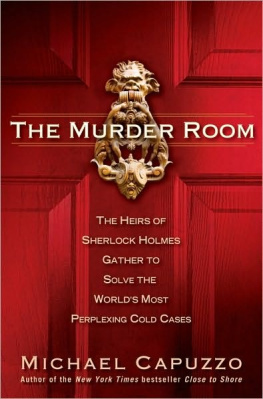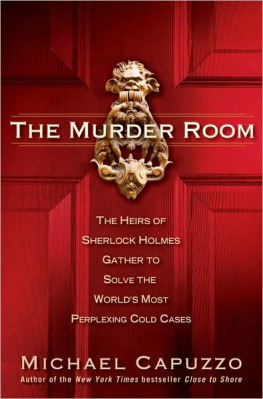W hy would anyone confess to murder, especially one committed thousands of miles away and in which there is no evidence linking her to the crime? That is one of the questions Harriet Ryan deftly explores in Court TV Presents: Murder in Room 103. The journey on which she leads us is a compelling comparative study of how we solve crime in America and how they do it 6,000 miles away. Murder in Room 103 reveals at once the tremendous failings of the American criminal justice system and its unsurpassed genius, all through the prism of a brutal crime that happened on the other side of the world.
Americans learn of the right to remain silent nearly as early as they learn The Pledge of Allegiance. That right, dictated by the U.S. Supreme Court in Miranda v. Arizona, is one of the most well known rules of law ever to have been handed down by the Court.
At the heart of The Miranda Decision, as it has come to be known by virtually every American, is the Fifth Amendment to the Constitution: No person shallbe compelled in any criminal case to be a witness against himself. This includes the right to remain silent at the earliest stages of a police investigation.
The late Chief Justice William Rehnquist was no friend of Miranda . He dissented from the majority opinion in 1966 and made no secret, in the years that followed, of his distaste for the decision that established the police procedures necessary to preserve this right against self-incrimination. Yet even Rehnquist came to accept Miranda as part of the American legal fabric. Late in his life, the Chief Justice wrote: Miranda has become embedded in routine police practice to the point where the warnings have become a part of our national culture.
Yet time and time again people confess, not just to petty theft or other nonviolent offenses, but to murder of the most sordid and gruesome variety. They confess in great detail and with seemingly sincere remorse. They implicate others. They outline for police details of the crime scene, the weapon, the murder itselfdetails only the killer could know.
Most people who confess to murder are guilty, and most often there is additional incriminating evidence to corroborate their confessions. But some people confess, even when they havent done anything wrong.
A false confession is counterintuitive and self-destructivedamning and compelling evidence of guilt, even if it is not supported by any witnesses or forensic evidence. A confession that is not true is an exceptionally dangerous piece of evidence precisely because it can single-handedly lead to the trial and conviction of an innocent person.
Yet untold numbers of defendants have given police outright confessions, only to be later exonerated by DNA evidence. These confessions are not prompted by internal knowledge of guilt. Instead, they are sometimes motivated by duress, even coercion. Fear of violence and the threat of a longer prison sentenceor executioncan lead people to confess to crimes they didnt commit.
Ironically, innocent people are more likely to waive their right to silence out of a nave belief that, because they havent done anything wrong, they have nothing to fear in talking to police. Memory is fragile, however, and when a person is under the stress of a lengthy and intense interrogation, her memory is vulnerable to suggestion. A young suspect, especially one with no experience with the criminal justice system, may begin to doubt her own memory when presented with false evidence. Skilled interrogators can suggest a false memory and then offer false facts to fill in the gaps. When a particularly guileless persons version of events is challenged in this way, what she knows to be true can be upended. The result: an internalized false confession.
In Murder in Room 103 , Harriet Ryan dissects a possible instance of this: a brutal murder and the investigation and various statements, admissions, and confessions that follow. Into that mix, she gently folds a complex layer of cross-cultural confusion and controversy. The result is a riveting story woven from four strands: a chaotic crime scene; the exploitation of sexual angst; international politics; and the bungled investigation of authorities in a faraway place.
This last strand is Ryans greatest achievement: the unraveling of a classic American murder mystery in the forbidding context of a foreign system of justice and all the implications of that uniquely alien setting for the outcome of the case.
The extraordinary context for this true crime tale is a cheap motel room in a small, far-flung country. The major players are Americans, but when they get caught in these tragic and sordid facts, two culturesand legal systemscollide: one that retains centuries-old customs and traditions; the other, a world leader in crime scene investigation and analysis.
With an American dead on their soil, police in that distant land are confronted with what is for them a rare occurrencemurder. The authorities scarcely know how to secure the crime scene, preserve evidence, or identify and question witnesses. When international pressure is brought to bear on a case badly managed from the start, U.S. interrogation techniques are exported to a culture where police are more interested in preserving order than disturbing it. Momentary clarity results only to be undone by the very person who seems to hold the key to the truth.
Ryan is most inspired here for she never draws a conclusion about who is guilty. She leaves the ultimate decision as to guilt or innocence to us. Her storytelling is passionate and sympathetic, her research meticulous. Yet Ryan never once gives even the slightest hint of what she believes to be the fact of the matter.
In her objectivity, however, is found a kernel of the truth in this most intriguing casetruth not only about who is guilty of the murder in room 103, but also a higher truth about justice and the uniquely American way we pursue it.
Jami Floyd,
July 2006

















